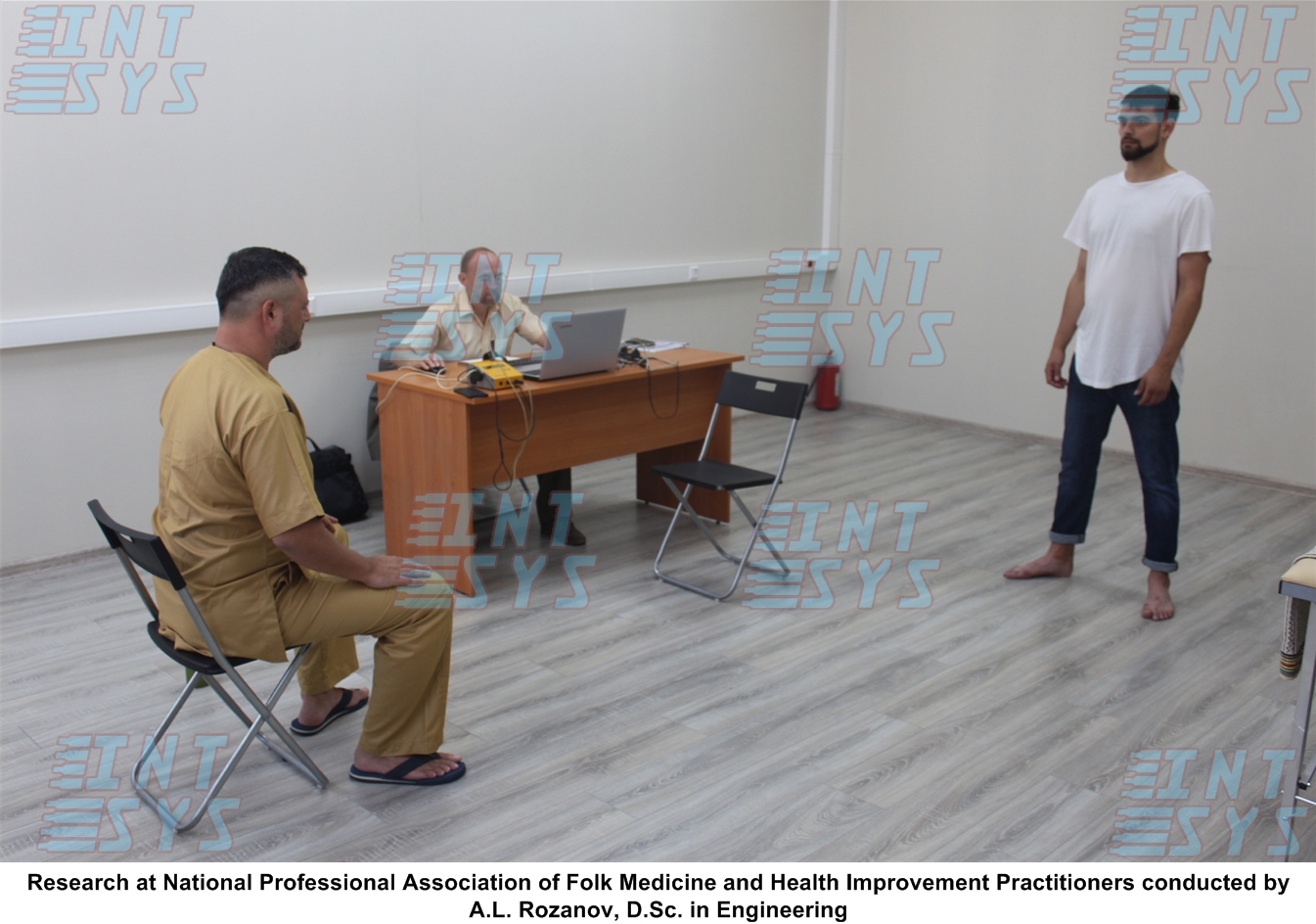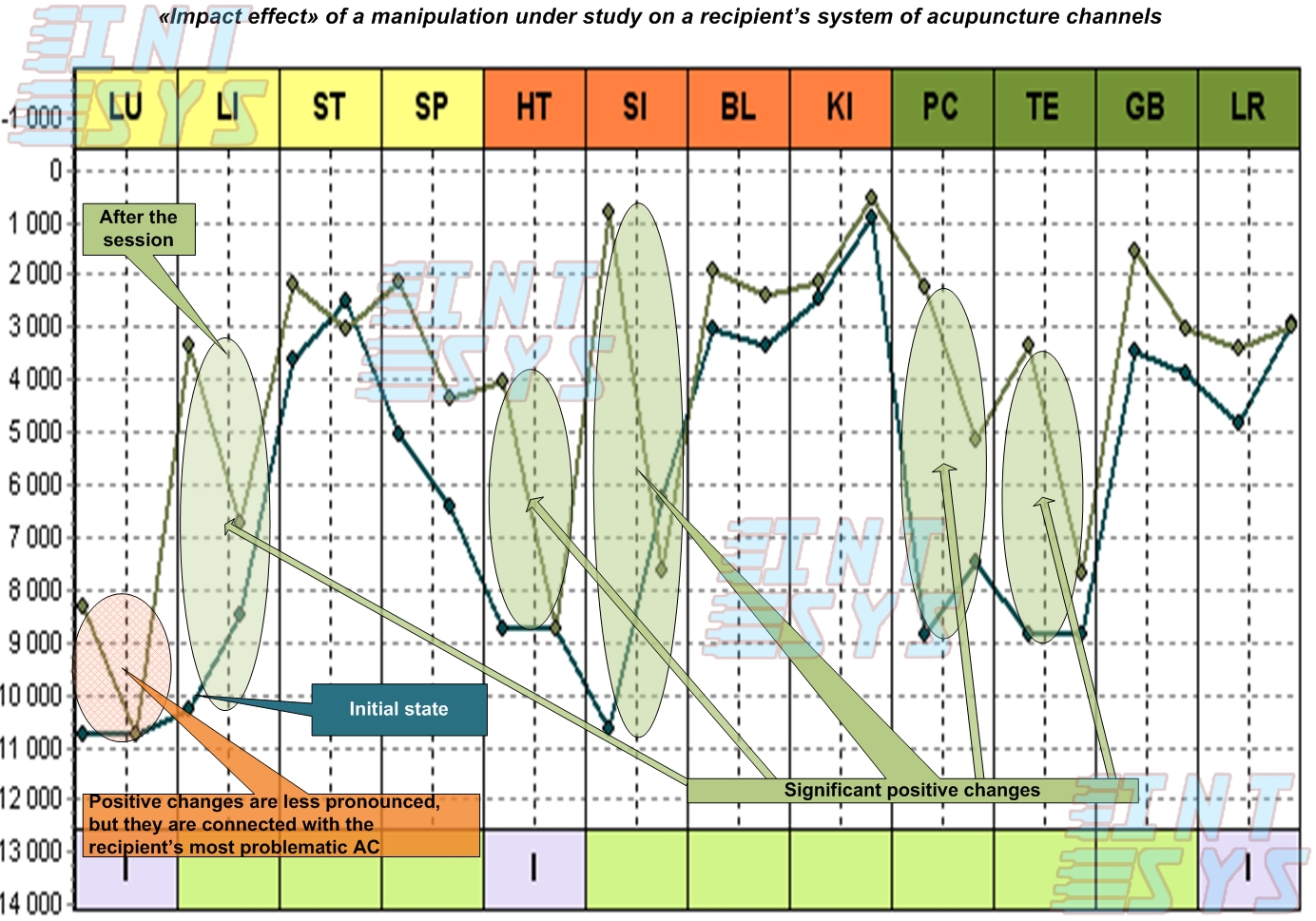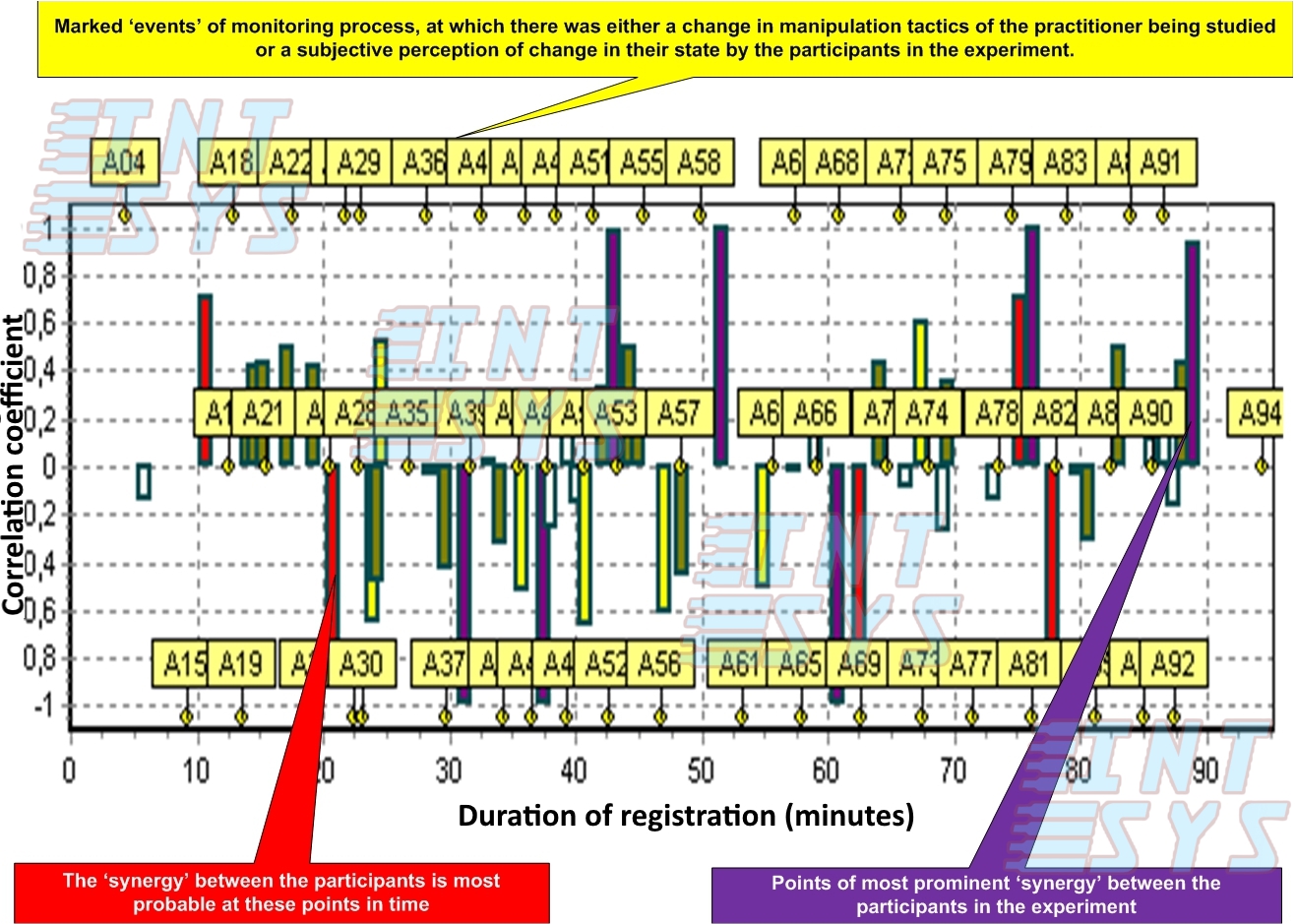Use of 'Prognoz' EPD in studying the ‘special states of human organism’
The versatility of "Prognoz" EPD system makes it suitable for use in the study of various previously understudied factors’ influence on human functional state (FS). Such factors may as well include agencies traditionally associated with various esoteric concepts. Two areas of such studies can be identified:
- the effect of interactions with other people including, but not limited to, various healing practices;
- changes in FS due to the influence of environmental factors. For example, ecological (including various geopathogenic aspects), electromagnetic (for example, geomagnetic activity) and so on, up to analysing the dynamics of human FS in the so-called 'places of power'.

Наиболее масштабное применение в рассматриваемой области технология «Прогноз» нашла при изучении различных целительских практик, осуществляемом во взаимодействии с Национальной профессиональной ассоциацией народной медицины и оздоровительных практик (НАНМ). Подобные работы проводятся начиная с 1998 года. За это время осуществлено более 200 научных исследований с участием специалистов народной медицины, проведено соответствующее документальное оформление полученных результатов согласно регламенту НАНМ. Как правило, при подобных исследованиях объектом изучения являлись одновременно и реципиент, и специалист-целитель. Совместно с анализом изменений показателей биологически активных точек осуществлялась также непрерывная дистанционная регистрация изменений ВСР на протяжении всего процесса исследования.
Such methodological approach made it possible, firstly, to carry out continuous analysis of a specialist’s workload. On the other hand, it enabled effect assessment of a healing process on a recipient’s adaptive and regulatory capabilities. Thirdly, when considering parallel measurements coupled with HRV registration, it was possible to numerically assess the degree of synergy between the participants in the experiment. In this case, synergy is understood as interdependence of changes occurring in the FS of the participants. Thus, an attempt was made to objectively assess the degree of 'partnership' between a practitioner and a recipient – a factor that can largely determine the success of a particular practice.


